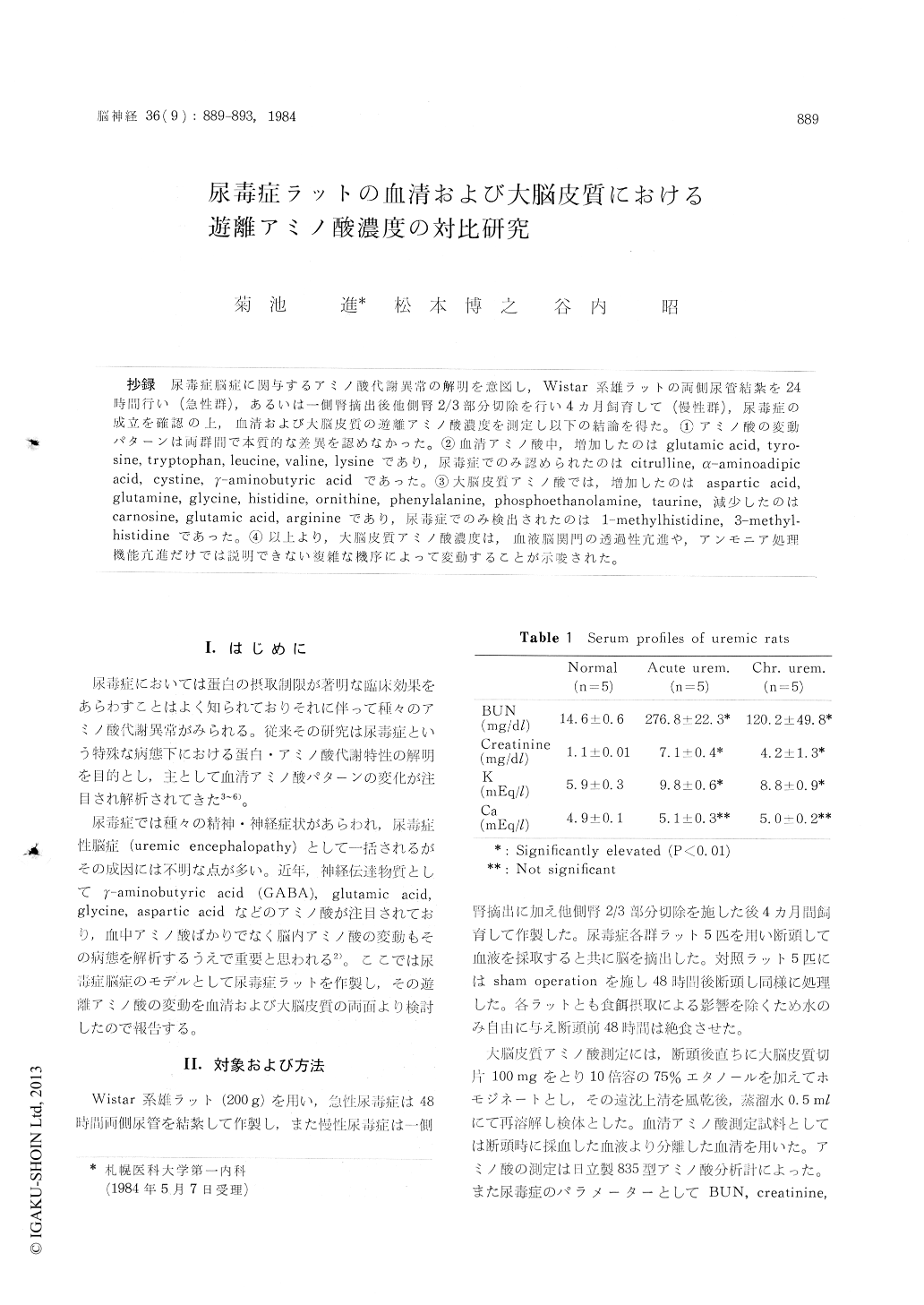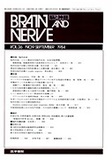Japanese
English
- 有料閲覧
- Abstract 文献概要
- 1ページ目 Look Inside
抄録 尿毒症脳症に関与するアミノ酸代謝,異常の解明を意図し,Wistar系雄ラットの両側尿管結紮を24時間行い(急性群),あるいは一側腎摘出後他側腎2/3部分切除を行い4カ月飼育して(慢性群),尿毒症の成立を確認の上,血清および大脳皮質の遊離アミノ酸濃度を測定し以下の結論を得た。①アミノ酸の変動パターンは両群間で本質的な差異を認めなかった。②血清アミノ酸中,増加したのはglutamic acid,tyro—sine,tryPtophan,leucine,valine,lysineであり,尿毒症でのみ認められたのはcitruline,α—aminoadipicacid,cystine,γ—aminobutyric acidであった。③大脳皮質アミノ酸では,増加したのはaspartic acid,glutamine,glycine,histidine,ornithine,phenylalanine,phosphoethanolamine,taurine,減少したのはcarnosine,glutamic acid,arginineであり,尿毒症でのみ検出されたのは1—methylhistidine,3—methyl—histidineであった。④以上より,大脳皮質アミノ酸濃度は,血液脳関門の透過性亢進や,アンモニア処理機能亢進だけでは説明できない複雑な機序によって変動することが示唆された。
The etiology of uremic encephalopathy remains largely unknown. In order to elucidate the role of amino acid changes in uremic encephalopathy, the free amino acids in serum and cerebral cortex were measured in the experimental uremic mcdels.
The rats weighing 200 g underwent bilateral ureteral ligation for 48 hours (acute uremia), while the other animals were kept for 4 months after unilateral nephrectomy followed by partial 2/3 nephrectomy of the remaining kidney (chronic uremia). They were confirmed to develop chemical changes compatible with uremia showing markedly elevated serum levels of BUN, creaitinine and K+, and were compared with the sham-operated cont-rols.
The amino acid patterns, obtained from serum and cerebral cortex, were essentially identical in both acute and chronic uremia.
In serum, aspartic acid, glycine and 3-methylhis-tidine were significantly elevated, and in addition citrulline, n-aminoadipic acid, cystine and γ-ami-nobutyric acid specifically appeared in uremia. On the contrary, glutamic acid, leucine, lysine, tryp-tophan, tyrosine and valine were significantly reduced. Tyrosineiphenylalanine ratio, valine/gly-cine ratio, essential amino acids/non essential amino acids ratio were also apparently reduced in uremia.
In cerebral cortex, aspartic acid, glutamine,glycine, histidine, ornithine, phenylalanine, phos-phoethanolamine and taurine were significantly ele-vated, whereas 1-methylhistidine and 3-methylhis-tidine were specifically detected. Carnocine, glu-tamic acid and ornithine disclosed a significant reduction in uremia.
The above complicated changes in cerebral cor-tex could not be explained simply by the enhan-ced permeability of the blood-brain barrier, or by the accelerated ammonia fixation. Therefore, it was suggested that the amino acid levels in cereb-ral cortex vary under the control of the sophis-ticated mechanism.

Copyright © 1984, Igaku-Shoin Ltd. All rights reserved.


